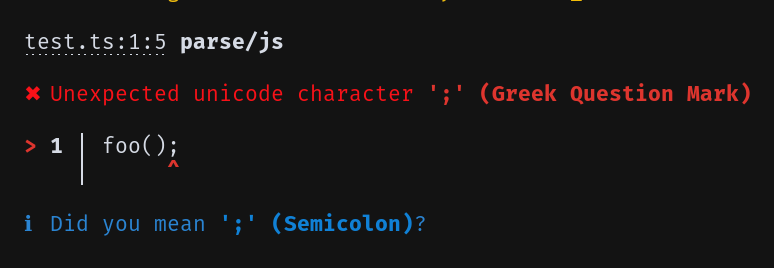

The plural of semicolon in English is semicola or semicolons. The semicolon falls between terminal marks and the comma its strength is equal to that of the colon.
SEMICOLON GREEK QUESTION MARK FULL
full stops, exclamation marks, and question marks) indicate the end of a sentence, the comma, semicolon, and colon are normally sentence-internal, making them secondary boundary marks. The modern uses of the semicolon relate either to the listing of items or to the linking of related clauses. Ben Jonson was the first notable English writer to use the semicolon systematically.

Manutius established the practice of using the semicolon to separate words of opposed meaning and to allow a rapid change in direction in connecting interdependent statements. The first printed semicolon was the work of the Italian printer Aldus Manutius the Elder in 1496. In the QWERTY keyboard layout, the semicolon resides in the unshifted homerow beneath the little finger of the right hand and has become widely used in programming languages as a statement separator or terminator. The semicolon is one of the least understood of the standard marks, and so it is probably not used by many English speakers. Semicolons can also be used in place of commas to separate the items in a list, particularly when the elements of that list contain commas. When a semicolon joins two or more ideas in one sentence, those ideas are then given equal rank. In the English language, a semicolon is most commonly used to link (in a single sentence) two independent clauses that are closely related in thought. The semicolon or semi-colon is a symbol commonly used as orthographic punctuation.


 0 kommentar(er)
0 kommentar(er)
